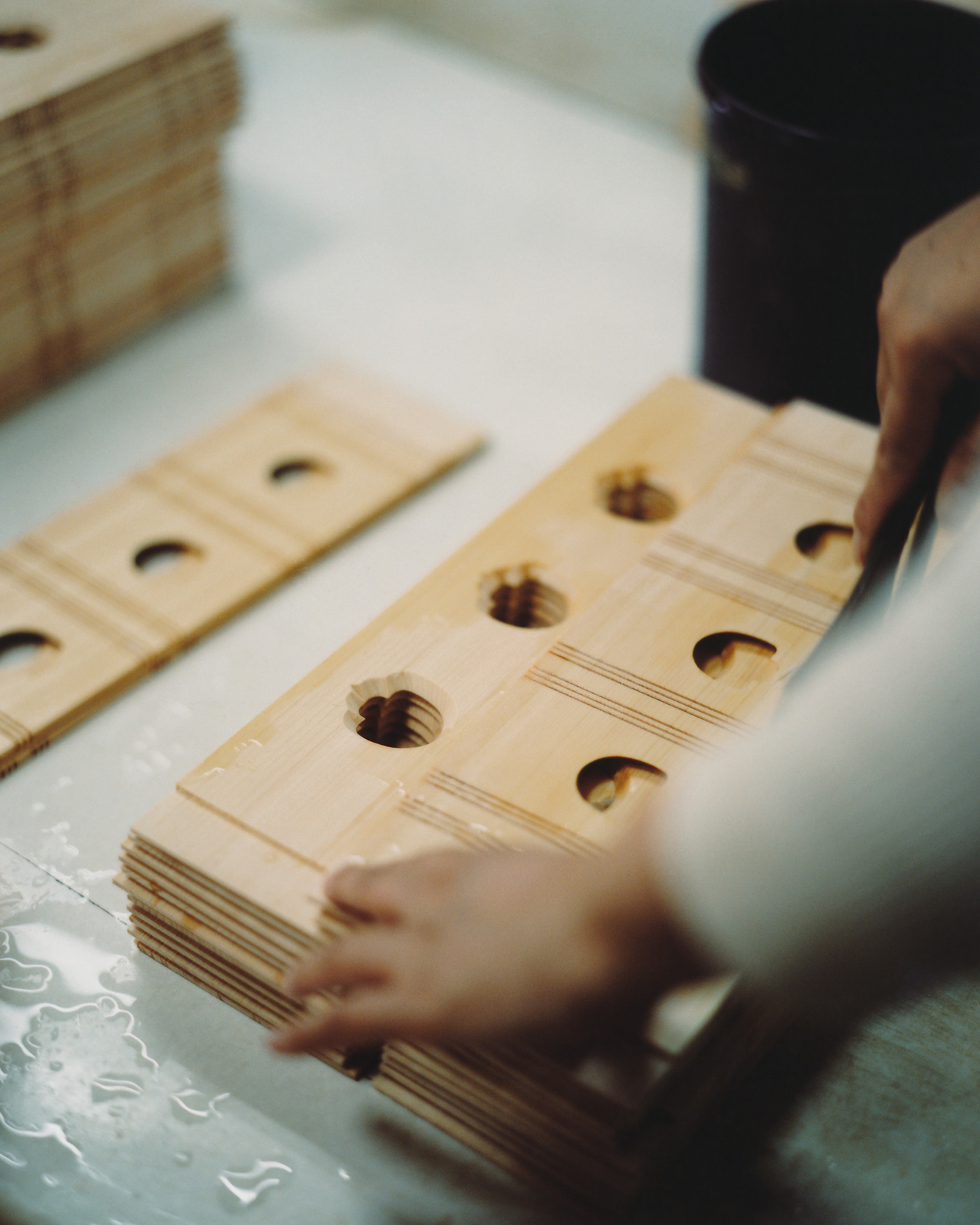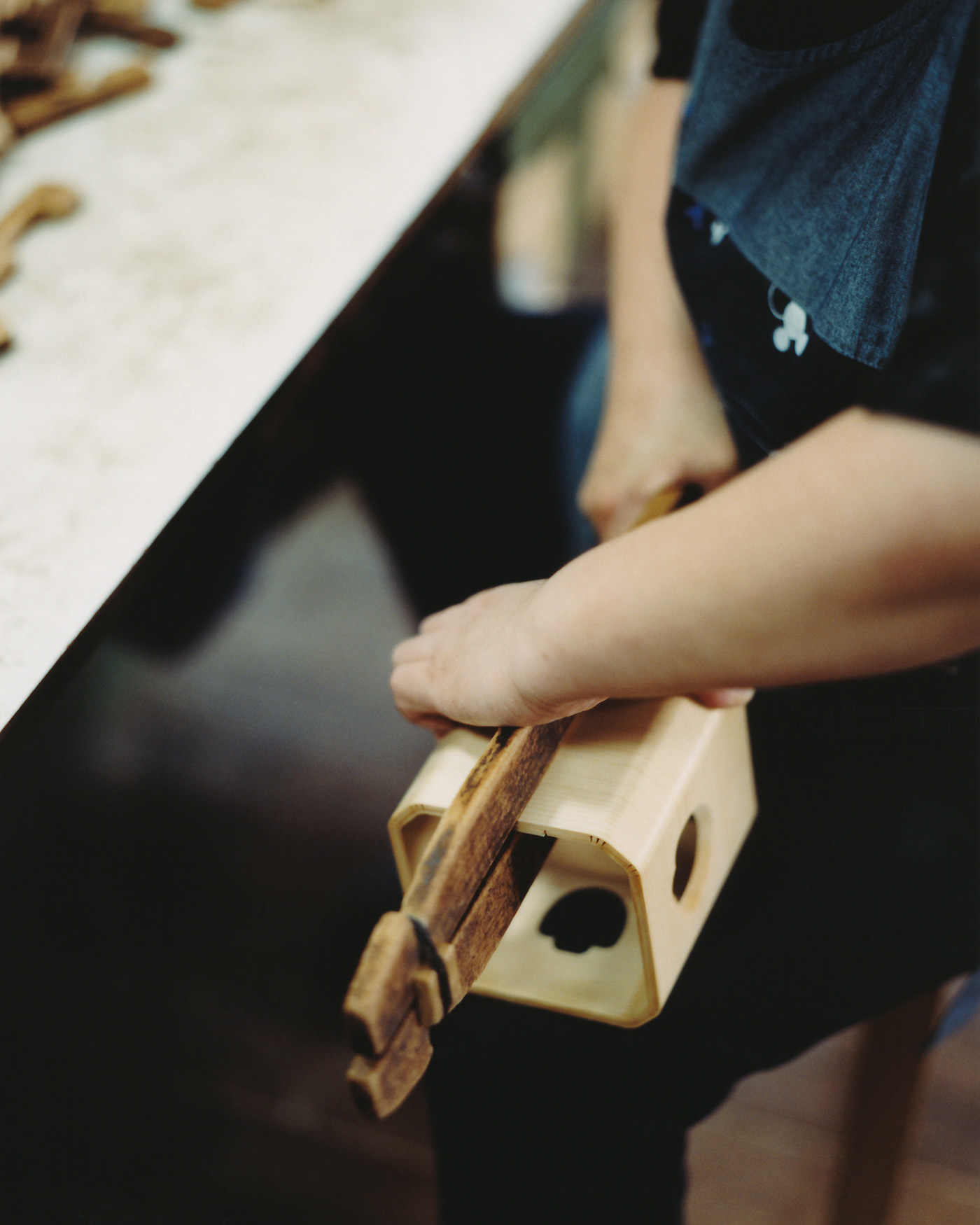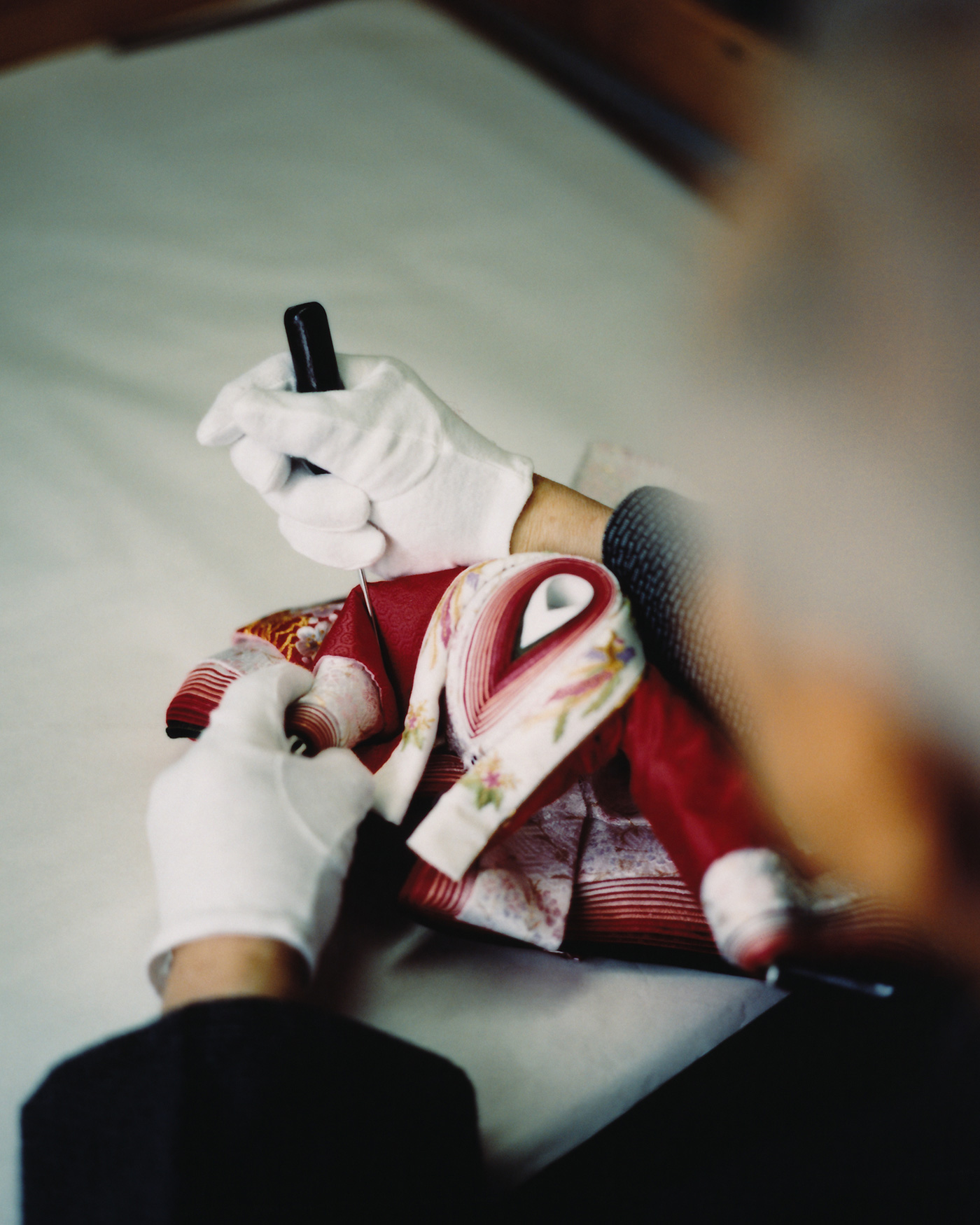OWARI BUTSUGU / TRADITIONAL CRAFT
Iwata Sanbou manufactures Shinto and Buddhist ritual implements, mainly sanbou, using traditional techniques handed down from generation to generation since the middle of the Edo period. We interviewed Mr. Yasuyuki Iwata, Executive Director and a traditional craftsman of Owari Butsugu.

Please tell us about the history of Iwata Sanbou.
We have been making Shingu and Butsugu (Shinto and Buddhist ritual implements) and betrothal gifts for generations, and our family tree can be traced back seven generations ago. Before coming to Nagoya, we were manufacturing Shingu in Inuyama, and I heard that this was in the middle of the Edo period (about 300 years ago).
In the Owari area, there are traditional crafts designated by the Minister of Economy, Trade, and Industry, such as Nagoya Butsudan (Buddhist altar) and Owari Butsugu, but it was not until the Edo period that they became particularly large. Work increased as a side job for low-ranked samurai, and the production of Butsudan and Butsugu began as the foundation of the Kazariya craftsmen who engraved metal fittings. Gradually, the business expanded, and we began to specialize in the manufacture of Shingu and betrothal gifts. Seven generations ago, we had many opportunities to be involved in Shinto as shrine parishioners of the Wakamiya Hachiman shrine, and we believe that is how we came to make Shingu.
Please tell us about the “hassokuan” and “sanbou” Shingu.
When performing Shinto rituals, the stand on which offerings are placed is called sanbou, and the table on which the sanbou is placed is called hassokuan.
Shinto was nurtured in Japan for more than 2,000 years, but a new religious belief sprouted with the arrival of Buddhism from China during the Asuka period (593–710). Until then, Shinto was only a belief that deities existed in nature and had no idols or scriptures. However, a great priest in the Heian period (794–1185) decided that Shinto should also have scriptures, and it is said that the base of Shinto was created over a period of about 1,000 years from the Heian period to the Edo period (1603–1868).

The three holes in the sanbou seem to have a certain meaning…
In Buddhism, there are Three Jewels: Buddha, Dharma, and Sangha, and it is said that there is a hole in the sanbou to listen to the teachings of each of these Jewels.
Even in Shinto, it is said that we hear the deity’s voice through the three holes, and the direction of the holes is never turned toward the deity. The three sides are oriented so that the binding of the oshiki (wooden tray) does not face toward the deity. The grain of the wood is a little disturbed in the overlapping areas of the binding, so care is taken not to show this to the deity.
The three holes in the sanbou are called kurikata, which is originally a Buddhist design. An interesting thing about sanbou is that it can be used as a Shingu if it is used in its plain wood form, and can be transformed into a Butsugu by processing it with lacquer or other means. Although they have the same shape, they are different products, and they are used in exactly the same way: to place offerings on them. The Butsugu sanbou is lacquered, gilded, and painted, while the Shingu sanbou is used in a more plain state. The reason for this is that the wood is left as it is, without using nails, to maximize the quality of the material and to show that there is no falsehood to the deity.
How do you make it without using nails?
Wood joinery, wood bending, and pasting margin called tome, binding it with cherry bark. In short, we do something like braiding to keep the bent wood from coming apart.

Please tell us about your wood bending technique.
Our bending technique is to bend a single piece of wood by making a groove perpendicular to the point where we want to bend the wood if it has a horizontal grain. Whether the board is 3mm or 10cm thick, the technique is to make a groove with just under 1mm remaining, steam only the processed part, and bend the wood when it becomes soft.
Binding the gusset is a technique also used in bending rings. However, bent rings can only be processed with thin wood of 2 to 3 mm, but one characteristic of our technique is that it can be used with thicker wood as well. We have the molds for our products and the formulas for making the molds, so we use them as the basis for our processing. There is no paper trail, and I learned it orally from my grandfather.
Is the type of lumber used for making hassokuan and sanbou always the same?
Generally, hinoki (Japanese cypress) is used. Hinoki is called “divine wood” in Shinto. The lumber used for the ceremonial rite Shikinen Sengu (periodic reconstruction of all or part of the shrine) of the Ise Grand Shrine was Kiso hinoki, which is considered the highest grade of wood in Japan.
Shinto has a long history of using local wood to make Shingu because of the belief that there are deities in nature. This land of Owari, Nagoya, was the land of Ieyasu Tokugawa, and at that time his domain extended to the Kiso area in Nagano Prefecture. Wood felled in Kiso was taken down the Kiso River to Ise Bay, then from Nagoya Port up the Hori River to be stored at a lumberyard in what is now Shirotori Garden. When the time was right for processing, the lumber was brought to the castle town of Nagoya Castle to be processed. In terms of distribution channels, Nagoya was also an area where Kiso hinoki was available in abundance.







